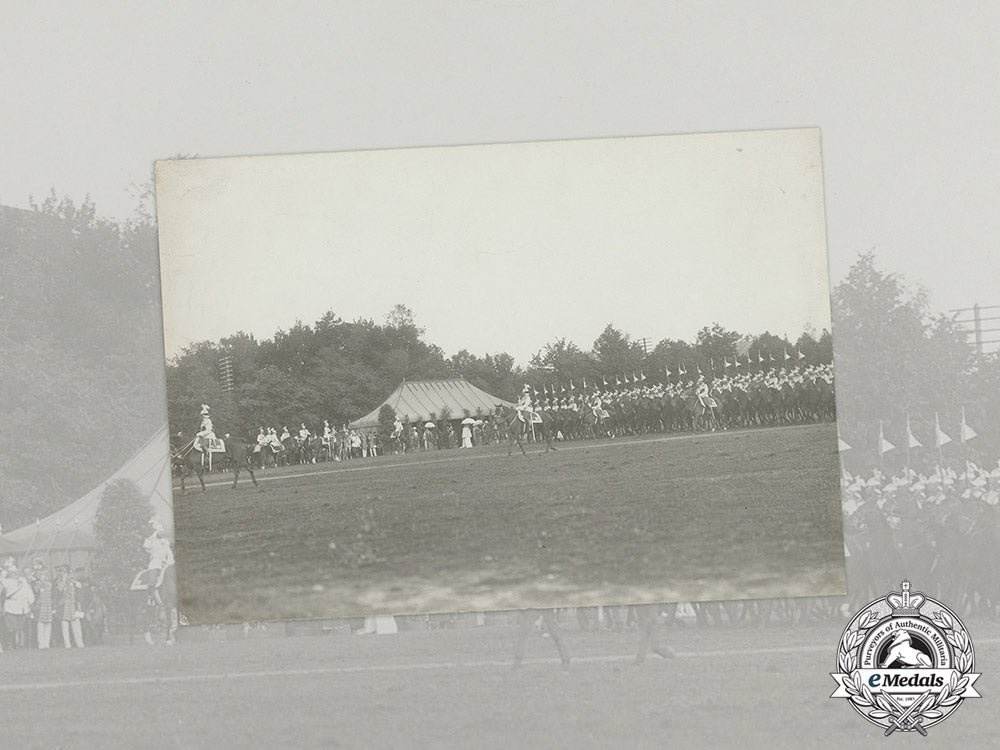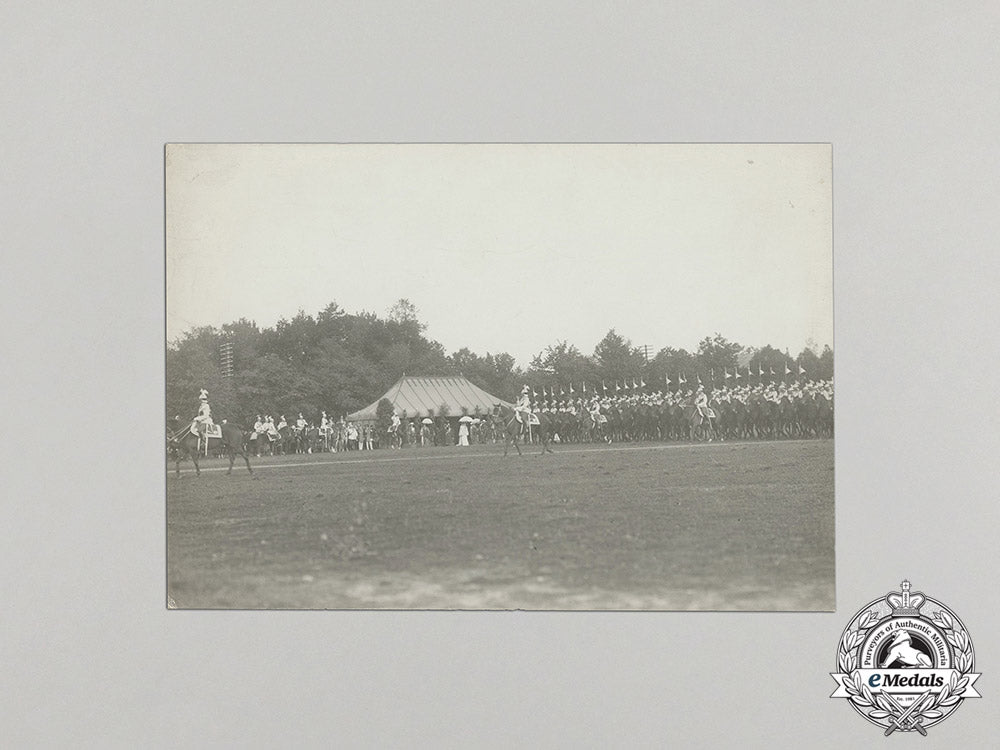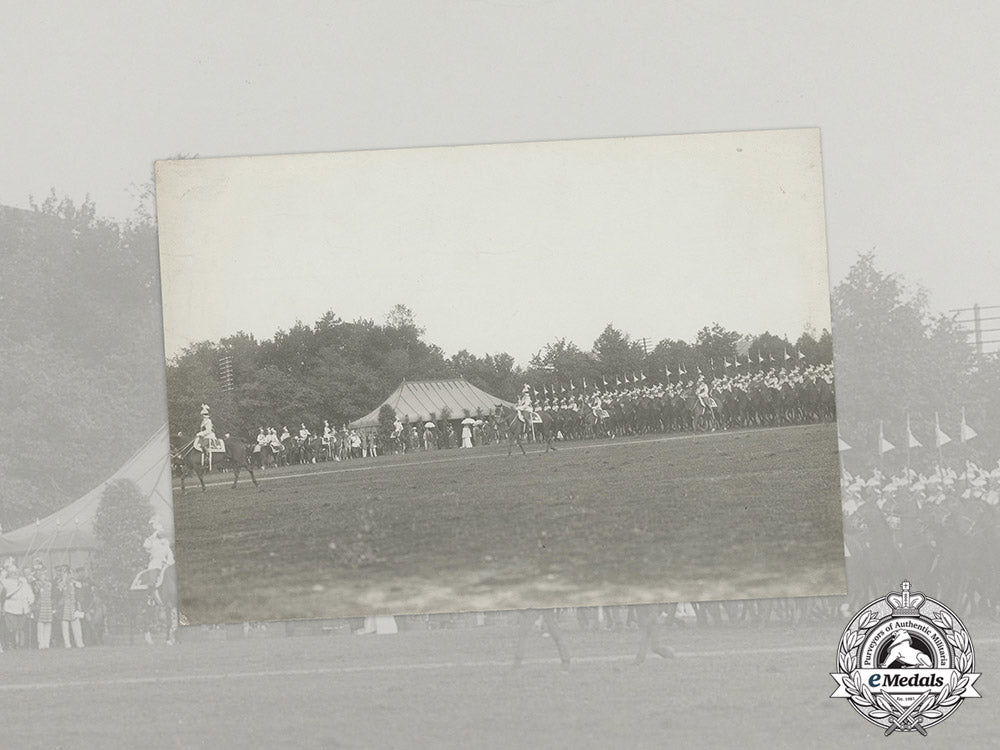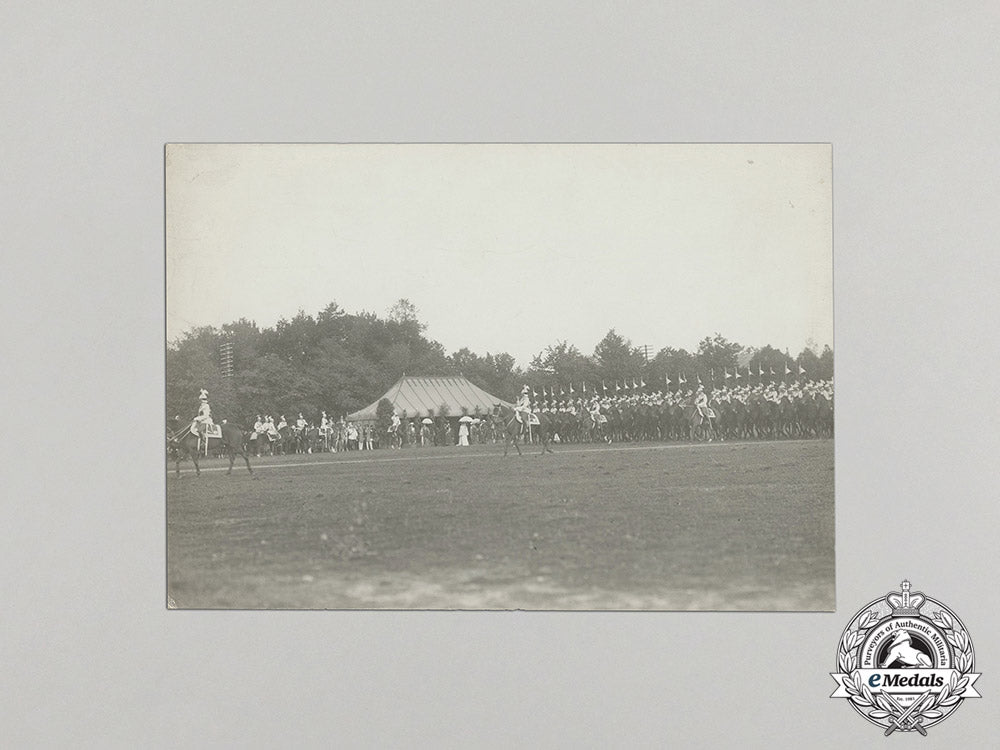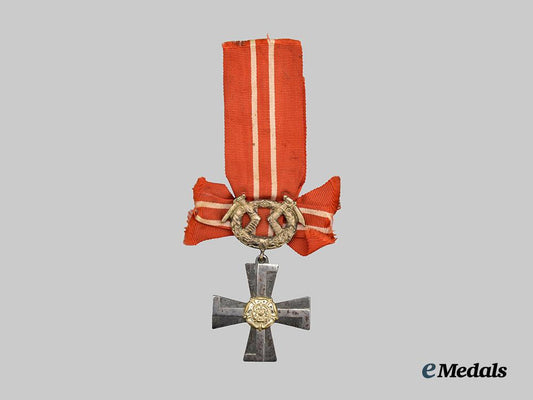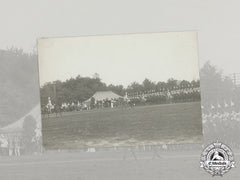
LOADING ...
In response to evolving domestic opinion, eMedals Inc has made the conscious decision to remove the presentation of German Third Reich historical artifacts from our online catalogue. For three decades, eMedals Inc has made an effort to preserve history in all its forms. As historians and researchers, we have managed sensitive articles and materials with the greatest of care and respect for their past and present social context. We acknowledge the growing sentiments put forth by the Canadian public and have taken proactive actions to address this opinion.
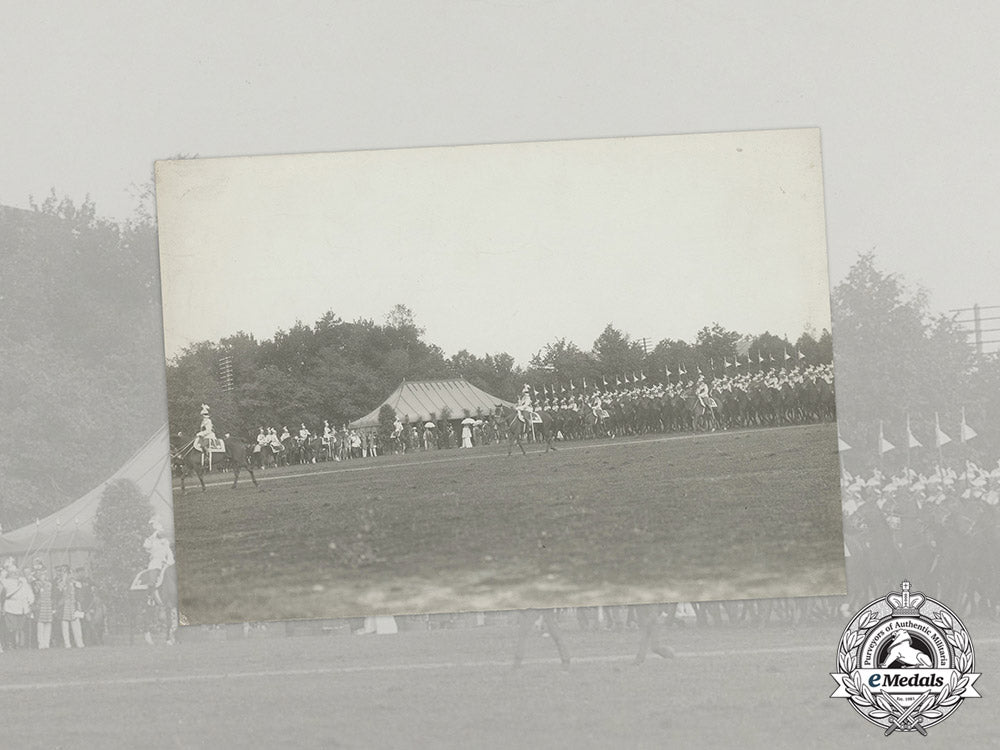
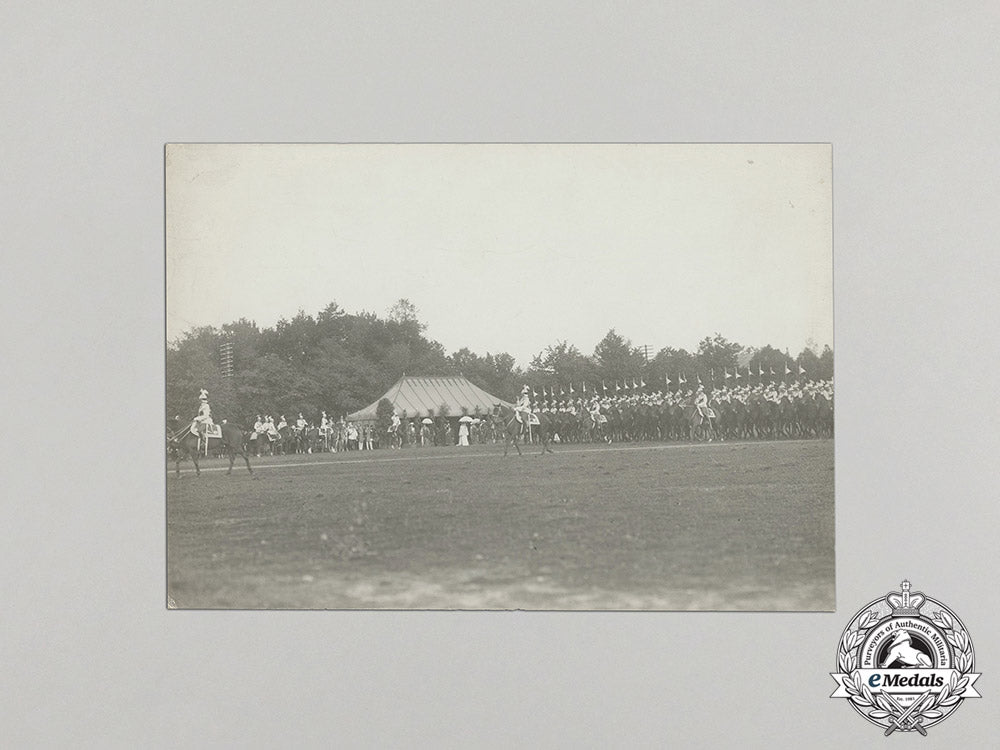
Russia Imperial. A Rare Photograph Of Tsar Alexander Iii & Maria Feodorovna
Russia Imperial. A Rare Photograph Of Tsar Alexander Iii & Maria Feodorovna
SKU: ITEM: EU14509
0% Buyer's Premium
Current Bid:
Your Max Bid:
Bid History:
Time Remaining:
Couldn't load pickup availability
Shipping Details
Shipping Details
eMedals offers rapid domestic and international shipping. Orders received prior to 12:00pm (EST) will be shipped on the same business day.* Orders placed on Canadian Federal holidays will be dispatched the subsequent business day. Courier tracking numbers are provided for all shipments. All items purchased from eMedals can be returned for a full monetary refund or merchandise credit, providing the criteria presented in our Terms & Conditions are met. *Please note that the addition of a COA may impact dispatch time.
Shipping Details
eMedals offers rapid domestic and international shipping. Orders received prior to 12:00pm (EST) will be shipped on the same business day.* Orders placed on Canadian Federal holidays will be dispatched the subsequent business day. Courier tracking numbers are provided for all shipments. All items purchased from eMedals can be returned for a full monetary refund or merchandise credit, providing the criteria presented in our Terms & Conditions are met. *Please note that the addition of a COA may impact dispatch time.
Description
Description
Russia Imperial. A Rare Photograph of Tsar Alexander III & Maria Feodorovna by Carl Oswald Bulla of St. Petersburg; Black and white, matte finish, the obverse illustrating Tsar Alexander III (reign: 1881-1894) and his wife, Maria Feodorovna, standing in front of a large tent, joined by clergymen and officials, a parade ground in front of the tent, two cavalryman on horseback in the foreground leading a line of cavalrymen on horseback appearing at the far right, other cavalryman in the background beside the tent at the far left, a bank of large trees behind the tent and the aforementioned figures, reverse stamped in blue ink with the photographer's stamp, the stamp inscribed "Photograph C.O. BULLA St. Petersburg, Newsky pr., 1543" (Carl Oswald Bulla) in English and Russian, numbered in pencil "17386" at the upper left, with other marks in pencil present, card-mounted, 158 mm x 226 mm, edge wear, near extremely fine. A rare period original photograph.
Footnote: The studio photographer's stamp on the reverse of the photo references Carl Oswald Bulla or Karl Karlovich Bulla (February 26, 1855 or 1853-1929), a German-Russian photographer, often referred to as the "father of Russian photo-reporting". Carl Oswald Bulla was born in Leobschütz in Prussia (now Poland). His exact birth year is unclear with some references citing 1853, while others cite 1855. In 1865, the adventurous boy ran away from his family to St. Petersburg, Russian Empire. The reasons prompting the boy to choose Russia out of all possible destinations are as yet unknown. After arriving in St. Petersburg, Bulla started to work as a delivery-boy in the Dupant firm that made and sold photography supplies. Soon his responsibilities included handmaking (coating and sensitizing) of the photographic glass negative plates. At the age of twenty, Bulla opened a small factory producing "momentary dry bromine-gelatin plates". Buying the ready-made photographic materials was much more convenient than handmaking their own and soon Bulla's plates became popular, selling not only in St.Petersburg, but across the whole Russian Empire. In February 1876, Bulla requested his naturalization and in July 1876, became a citizen of the Russian Empire. In 1875, Bulla opened his first photographic studio at 61 Garden Street, and soon became a fashionable photographer. For ten years he worked there doing pavilion portrait photography. Then, in 1886, he received the permit from the St.Petersburg Police, allowing him to take pictures everywhere. While he did not abandon studio photography (in fact he opened two more studios: on the Catherine Canal and on Nevsky Prospekt), he became more and more involved into photography of city life. At the end of the nineteenth century, newspaper printing technology allowed the publishing of photographs. In 1894, the Russian Department of Post and Telegraphs also allowed use of postcards. Both events significantly increased the demand for photographs. In 1895, Bulla ceased his production of photographic supplies and put all his energy into photography. In his advertisement he wrote "The oldest photographer-illustrator Karl Bulla photographs for the illustrated magazines anything and anywhere without limits from the landscape or the building, indoor or outdoor day or night at the artificial light". Indeed, he photographed everything and anything: Life of the Tsar family and assemblies of anti-government intelligentsia, stars of scene and manual workers, palaces and hostels for homeless, even such exotics as gay parties. Bulla was on the editorial board of many magazines including the popular "Niva". In the 1910s, the annual revenue of the firm "Bulla and Sons" reached 250,000 roubles. In 1916, Bulla passed the management of the firm "Bulla and Sons" to his sons, Alexander and Victor, and moved to Ösel Island (currently Saaremaa, Estonia). He lived a quiet life there, photographing the local ethnographic material and teaching Estonian boys the basics of photography until his death in 1929. After the retirement of Karl Bulla, his firm was managed by his sons, Andrey and Viktor, the latter a notable photo-reporter in his own right. He was the author of a series on the Russo-Japanese War and the First World War. At that time, before the invention of the telephoto lens, photography was a very difficult and dangerous mission. Later, Victor Bulla took photographs of the October Revolution and the Russian Civil War. He was appointed the Chief Photographer of the Leningrad Soviet. He took a lot of photographs of Vladimir Lenin and other bolsheviks. In 1935, Victor Bulla donated 132,683 negatives to the State Archive of Leningrad District. The archive grew and now consists of more than 200,000 negatives of works by Karl Bulla and his sons. All the photographs in the archive are in the public domain and are a favourite source of illustrations of life in St. Petersburg. In 1938, during the Great Purge, he was arrested, accused of being a German spy and shot. The life of Andrey Bulla also ended tragically. He was arrested in the early 1930s and sent to White Sea-Baltic Canal labour camps, returning after five years and soon dying.
Description
Russia Imperial. A Rare Photograph of Tsar Alexander III & Maria Feodorovna by Carl Oswald Bulla of St. Petersburg; Black and white, matte finish, the obverse illustrating Tsar Alexander III (reign: 1881-1894) and his wife, Maria Feodorovna, standing in front of a large tent, joined by clergymen and officials, a parade ground in front of the tent, two cavalryman on horseback in the foreground leading a line of cavalrymen on horseback appearing at the far right, other cavalryman in the background beside the tent at the far left, a bank of large trees behind the tent and the aforementioned figures, reverse stamped in blue ink with the photographer's stamp, the stamp inscribed "Photograph C.O. BULLA St. Petersburg, Newsky pr., 1543" (Carl Oswald Bulla) in English and Russian, numbered in pencil "17386" at the upper left, with other marks in pencil present, card-mounted, 158 mm x 226 mm, edge wear, near extremely fine. A rare period original photograph.
Footnote: The studio photographer's stamp on the reverse of the photo references Carl Oswald Bulla or Karl Karlovich Bulla (February 26, 1855 or 1853-1929), a German-Russian photographer, often referred to as the "father of Russian photo-reporting". Carl Oswald Bulla was born in Leobschütz in Prussia (now Poland). His exact birth year is unclear with some references citing 1853, while others cite 1855. In 1865, the adventurous boy ran away from his family to St. Petersburg, Russian Empire. The reasons prompting the boy to choose Russia out of all possible destinations are as yet unknown. After arriving in St. Petersburg, Bulla started to work as a delivery-boy in the Dupant firm that made and sold photography supplies. Soon his responsibilities included handmaking (coating and sensitizing) of the photographic glass negative plates. At the age of twenty, Bulla opened a small factory producing "momentary dry bromine-gelatin plates". Buying the ready-made photographic materials was much more convenient than handmaking their own and soon Bulla's plates became popular, selling not only in St.Petersburg, but across the whole Russian Empire. In February 1876, Bulla requested his naturalization and in July 1876, became a citizen of the Russian Empire. In 1875, Bulla opened his first photographic studio at 61 Garden Street, and soon became a fashionable photographer. For ten years he worked there doing pavilion portrait photography. Then, in 1886, he received the permit from the St.Petersburg Police, allowing him to take pictures everywhere. While he did not abandon studio photography (in fact he opened two more studios: on the Catherine Canal and on Nevsky Prospekt), he became more and more involved into photography of city life. At the end of the nineteenth century, newspaper printing technology allowed the publishing of photographs. In 1894, the Russian Department of Post and Telegraphs also allowed use of postcards. Both events significantly increased the demand for photographs. In 1895, Bulla ceased his production of photographic supplies and put all his energy into photography. In his advertisement he wrote "The oldest photographer-illustrator Karl Bulla photographs for the illustrated magazines anything and anywhere without limits from the landscape or the building, indoor or outdoor day or night at the artificial light". Indeed, he photographed everything and anything: Life of the Tsar family and assemblies of anti-government intelligentsia, stars of scene and manual workers, palaces and hostels for homeless, even such exotics as gay parties. Bulla was on the editorial board of many magazines including the popular "Niva". In the 1910s, the annual revenue of the firm "Bulla and Sons" reached 250,000 roubles. In 1916, Bulla passed the management of the firm "Bulla and Sons" to his sons, Alexander and Victor, and moved to Ösel Island (currently Saaremaa, Estonia). He lived a quiet life there, photographing the local ethnographic material and teaching Estonian boys the basics of photography until his death in 1929. After the retirement of Karl Bulla, his firm was managed by his sons, Andrey and Viktor, the latter a notable photo-reporter in his own right. He was the author of a series on the Russo-Japanese War and the First World War. At that time, before the invention of the telephoto lens, photography was a very difficult and dangerous mission. Later, Victor Bulla took photographs of the October Revolution and the Russian Civil War. He was appointed the Chief Photographer of the Leningrad Soviet. He took a lot of photographs of Vladimir Lenin and other bolsheviks. In 1935, Victor Bulla donated 132,683 negatives to the State Archive of Leningrad District. The archive grew and now consists of more than 200,000 negatives of works by Karl Bulla and his sons. All the photographs in the archive are in the public domain and are a favourite source of illustrations of life in St. Petersburg. In 1938, during the Great Purge, he was arrested, accused of being a German spy and shot. The life of Andrey Bulla also ended tragically. He was arrested in the early 1930s and sent to White Sea-Baltic Canal labour camps, returning after five years and soon dying.
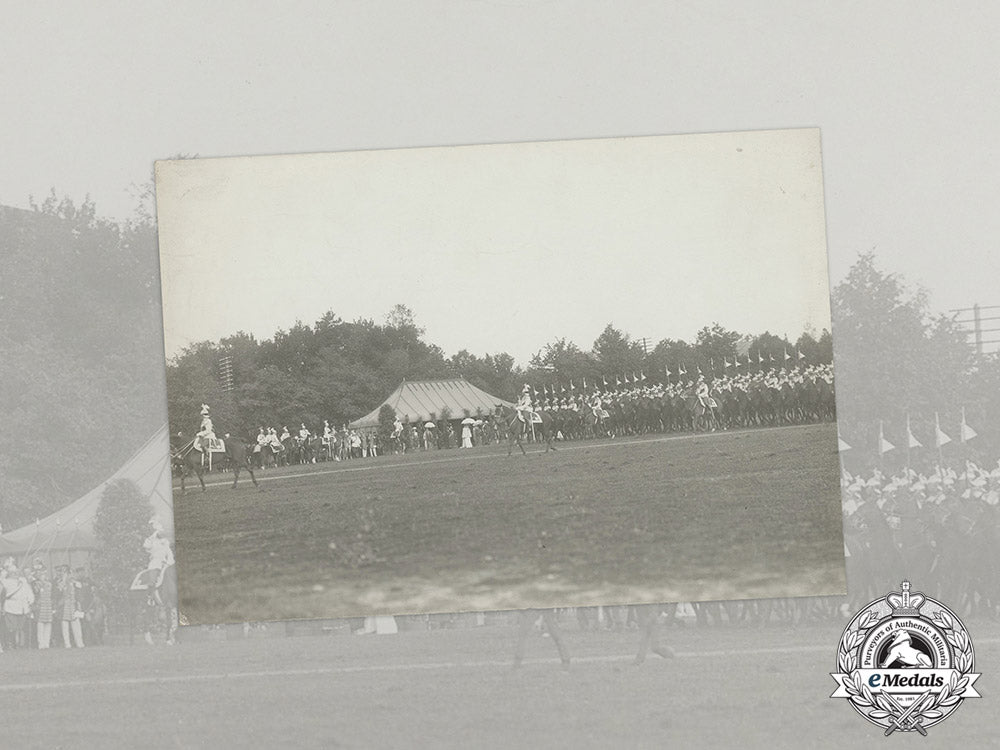
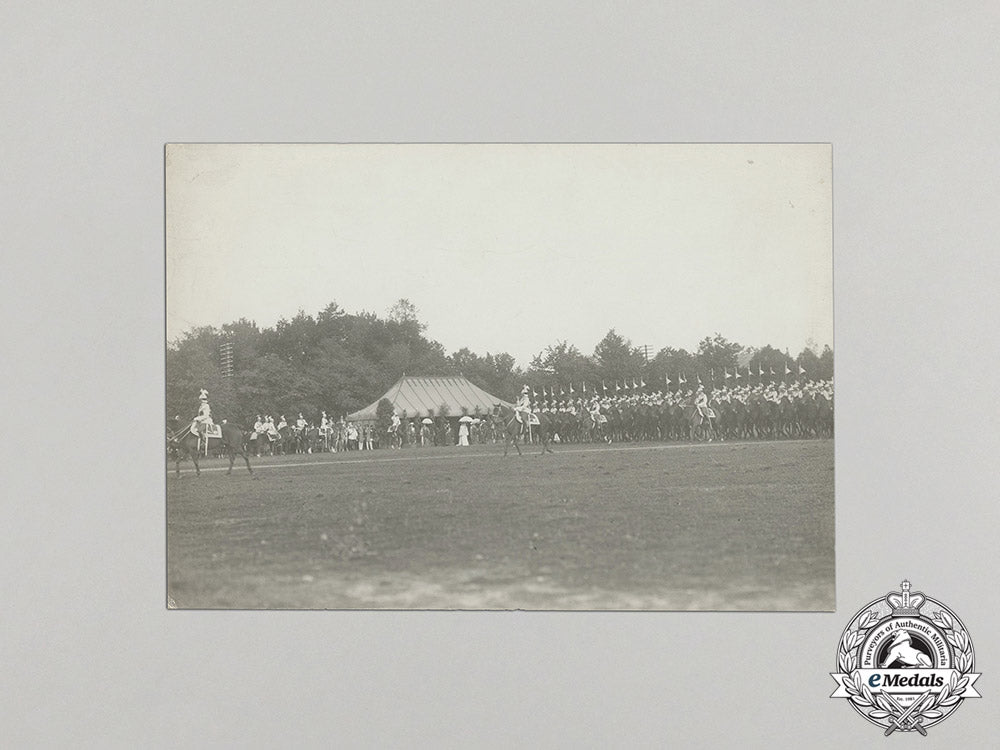
You May Also Like
Spain, Spanish State. A Medal of the Russian Campaign, with Case, by Diez y Campañia
EU24085
Austria-Hungary, Empire. A Rare Sturmbataillon 106 Personnel Badge
EU24086
France, Free Country Of Burgundy. An Order Of Saint George Of Burgundy, Embroidered Breast Star, C. 1925
EU19677
Russia, Imperial. A Russo-Japanese War Period Group Photograph, c. 1904–1910
EU23370
Finland, Republic. An Order Of The Cross Of Liberty, IV Class 1941, Military Division
EU24024
-
Spain, Spanish State. A Medal of the Russian Campaign, with Case, by Diez y Campañia
EU24085
Add to CartRegular price $340 USDRegular price $0 USD Sale price $340 USDUnit price / per -
Austria-Hungary, Empire. A Rare Sturmbataillon 106 Personnel Badge
EU24086
Add to CartRegular price $675 USDRegular price $0 USD Sale price $675 USDUnit price / per -
France, Free Country Of Burgundy. An Order Of Saint George Of Burgundy, Embroidered Breast Star, C. 1925
EU19677
Add to CartRegular price $330 USDRegular price $0 USD Sale price $330 USDUnit price / per -
Russia, Imperial. A Russo-Japanese War Period Group Photograph, c. 1904–1910
EU23370
Add to CartRegular price $340 USDRegular price $0 USD Sale price $340 USDUnit price / per -
Finland, Republic. An Order Of The Cross Of Liberty, IV Class 1941, Military Division
EU24024
Add to CartRegular price $200 USDRegular price $0 USD Sale price $200 USDUnit price / per
Do you have a similar item you are interested in selling?
Please complete the form and our client care representatives will contact you.
Sell Item